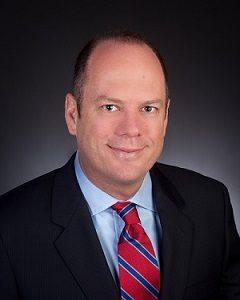More Tales of 401(k) Plans Gone Awry

As some of my Pentegra colleagues have pointed out in some of our recent blogs, there are many pitfalls and problems that can arise when it comes to the ins and outs of creating, administering and managing your company’s retirement plan. Here are some of my own experiences, which I hope can help others avoid some of the difficulties that can come with the territory.
As Pentegra’s Pete Swisher recently blogged, Tales of 401(k) Administration Gone Awry – Part 1, many of these mishaps are the client’s fault. Such was the case with one bank that did a very good job of everything … except for following the law when it came to their retirement plan.
The bank had no intention of doing anything that could be construed as not being in the best interests of its plan participants, in accordance with the stipulation that anyone serving as an Employee Retirement Income Security Act of 1974 (ERISA) fiduciary has the authority to control and manage the operation of a retirement plan, but must do so solely in the best interest of plan participants and beneficiaries.
But unfortunately, in this case the bank failed to follow all the guidelines, which include providing that a plan’s investments are diversified. Instead, they were putting 100 percent of the plan’s assets into a very rich profit-sharing plan via certificates of deposits (CDs) in the trust department – just as they had been doing for some 32 years – for the benefit of their plan participants.
However, when the FDIC came in and was auditing the trust department, and they saw all these bank CDs, they got nervous and alerted the U.S. Department of Labor (DOL). The DOL came in to audit the plan and said, “There is no diversification of plan assets, therefore you need to go back seven years and pay the difference between the return on investment of the CD – which was around 1.65 percent – and what a normal, moderate portfolio would have returned over the same seven-year period.”
This was a $14 million plan, at about 5.5 percent compounded over those seven years. Obviously there was a large amount of money that the bank had to pony up to the plan participants … plus a 20 percent penalty was assessed to the fiduciary of the plan.
In another case, reminiscent of one that Pete Swisher recounted in a subsequent blog, Tales of 401(k) Administration Gone Awry – Part 2, we heard that one of our competitors had paid out retirement benefits based on an old beneficiary form. So old, in fact, that the plan participant had divorced his first wife and had since remarried. The benefit ended up being paid to the first wife, which as you can imagine caused a great deal of consternation both for the second wife and for the financial institution itself.
Another example illustrates how you should be careful to not be too specific in your Investment Policy Statement (IPS). (Side note: If you haven’t looked at your IPS recently – or indeed don’t even have one – please address that situation as soon as possible!) One bank was very specific about what would happen if an investment were to be removed: that it would need board approval.
The first thing the auditor said was: “When was the last time you added/removed an investment, and where was the board approval?” The resulting scramble was not a pretty sight.
In one instance from the other side of the administrator/plan participant equation, I know of a bank that went around and around in circles trying to determine whether it should introduce auto-enrollment and auto-escalation into its plan. (Some of the reasons why implementing such tools are discussed here.) About five years ago, the bank decided to add those features … much to the (temporary) dismay of one particular employee.
According to the human resources (HR) director at this particular financial institution, one of the bank’s employees came into her office one day with tears streaming down her face and a statement in her hand. She had no idea that she’d been automatically enrolled in the bank’s retirement plan, and had never opened the quarterly statements we’d been sending out to her until this particular time.
She believed the bank would think she’d been stealing these “extra” sums, and was pleading that, as a single mother of three living paycheck to paycheck, she and her children couldn’t afford for her to go to jail – couldn’t she please return the money?
The HR director took the time to explain to her what was happening, and to convince her that it really was her money. The employee then burst into tears again and said, “Do you realize that this is the only kind of savings that I have?”
A happy ending, but it illustrates that old truism about human interaction: Be sure you communicate clearly with the people around you … including when you’re administering their retirement fund!
About the Author
